53 F. high in the Twin Cities, mildest since November 15, 2013 (114 days ago).
38 F. average high for March 10.
36 F. high on March 10, 2013.
15" snow on the ground as of Monday evening.
Blizzard potential Wednesday from Chicago to Detroit.
Weather Volatility
It
may just be my imagination - perhaps I need to recalibrate my meds -
but when it comes to the weather something seems....off. I can't quite
put my finger on it yet, but the normal ebb & flow of the atmosphere
is gummed up. The jet stream is misbehaving more than usual.
Exhibit
A: two years ago it was already in the mid-60s; flowers were starting
to pop. It was 80F. by mid-March! We had a 7 month boating season in
2012, the warmest year in recorded Minnesota history.
This winter?
Coldest since the late 70s for much of the state. It's that
variability, a jumbo case of weather-whiplash, that has us scratching
our heads in wonder.
It's not just temperature extremes. Ask a
farmer. We now live in perpetual drought, interrupted by an intense
flood every now and then.
The forecast calls for greater swings of the weather pendulum, more eye-watering extremes.
For
the record, I'm as happy as the next guy to see this week's thaw - I'm
almost looking forward to studying the maps. A little rain early today
ends as a coating of slush; a cool half foot for Chicago tonight, a foot
for parts of New England. No intense weather drama here at home, just
40 wondrous degrees again by Thursday, followed by cooler weather next
week.
But no Polar Vortex.
* Northern Hemisphere temperature anomalies for Monday courtesy of Climate Reanalyzer.
Monday Highs.
55F at Brainerd, 51 Duluth, a balmy 53F at MSP International in the
Twin Cities and 47 at St. Cloud, in spite of nearly 20" snow on the
ground? Yesterday's highs were impressive, considering all the snow
still on the ground. BTW: without the snow we would have been in the 60s
to near 70. Graphic: Mesowest.
A Milder Than Average Week?
We cool off a bit later today and Wednesday before warming up into the
low 40s again Thursday and Friday. No, I guess we shouldn't be
surprised, considering the sun is now as high in the sky as it was in
late September. We cool off next week, but ECMWF guidance is reassuring:
no polar air in sight. Graphic: Weatherspark.
Our Own Spring Break?
Snow on the ground will act as a meteorological brake, preventing the
mercury from reaching balmy levels anytime soon. But GFS guidance
suggests 40s and even a few 50s by the end of March; potentially warm
enough for a major (rain) event between March 22-24. Any heavy rain on
frozen, snow-covered ground may accelerate flood potential - something
we'll need to keep an eye on.
All-Time Ice Coverage Record On Lake Michigan. Here are details from
CIMSS, at the University of Wisconsin: "
Ice
coverage on Lake Michigan set an all-time record of 93.29% on Saturday
March 8th. Partial cloud cover prevented a clear view so here are two
side-by-side views of the ice from March 5th and 6th acquired by the
MODIS instrument on the Terra satellite. Notice how the wind shift
pushed ice off-shore along the Michigan coastline on March 6th."
One Photograph That Sums It All Up.
I saw the traffic jam on the beach at Fort Myers and had to laugh. It
was either laugh or weep uncontrollably. Yes, it's been a tough winter,
and Spring Break is going to be madness. Enough about winter - I'm as
sick of snow and cold as you are right now; so let's fixate on Spring
Break Weather in late March for a variety of warm weather destinations.
Yes, that sounds like a good idea for today's edition of
Climate Matters: "
WeatherNationTV
Chief Meteorologist Paul Douglas feels what much of America is feeling,
that we're all sick of Winter! He reads your Facebook comments and
takes a welcome trip to some warmer spots. Not all is well however as
yet another winter storm takes aim at parts of the Ohio Valley and
Northeast. When will it end?!"
Wrong Place - Wrong Time.
In spite of all the cold weather headlines east of the Rockies in
recent months, the entire Northern Hemisphere has had a (much) warmer
than average run of temperatures since December 1. From MIC Dan Luna at
the Twin Cities National Weather Service: "
Jon Martin at UW has
calculated the areal coverage (across the Northern Hemisphere) of
various threshold temperatures from 1948-49 through this year (using
gridded reanalysis and analysis data). He has a paper on some of this.
The image above shows the total square kilometers covered by 850 hPa
temperatures < -5 C for the DJF period in comparison to "normal"
(solid blue is mean, and the dashed are +/- 1 standard deviation). He
also noted that this year had the least overall (time
averaged/integrated) spatial extent for the period of record. We,
unfortunately, have been the ones stuck in the anomalously coldest
pocket the entire time."
* thanks to Meteorologist In Charge Dan Luna at the Twin Cities National Weather Service for passing this along.
Alerts Broadcaster Update: Issued Midnight, Monday night, March 10, 2014.
*
Latest guidance more impressive for a burst of very heavy snow
Wednesday morning from Chicago to Detroit. Some 8-12" amounts are
possible, and sustained winds of 30-40 mph at the height of the storm
will be capable of creating blizzard or near-blizzard conditions
Wednesday.
* I expect numerous airline cancellations for Chicago
and Detroit area airports Wednesday; traffic gridlock is possible on
area highways as temperatures drop rapidly behind the storm, falling
into the teens by late afternoon with a subzero wind chill.
*
Blizzard conditions may extend to Toronto and Montreal late Wednesday
and Wednesday night; I still expect 10-14" snowfall amounts for much of
upstate New York and interior New England by Thursday.
* New York City will avoid heavy snow with this storm; the atmosphere warm enough for mostly rain.
Latest Model Guidance.
High-resolution model data (RPM simulation) shows considerably more
snow for Chicago and Detroit, a 6-8 hour burst of heavy snow late
Tuesday night into midday Wednesday, tracking rapidly from west to east
across the northern Ohio Valley and Great Lakes. Near white-out
conditions are possible Wednesday along the I-90 corridor. Model
guidance: WSI Corporation.
Updated BPI Solution.
Our proprietary in-house BPI (Blizzard Potential Index) shows blizzard
conditions pushing from Rockford and Joliet into Chicago late Tuesday
night into Wednesday morning, reaching Detroit by late morning and
midday Wednesday. A blizzard is defined as 35+ mph winds and
visibilities under 1/4 mile in falling or blowing snow. It now looks
like we will have this criteria from Chicago to Detroit late Tuesday
night into Wednesday. Map sequence: Ham Weather.
Latest Snowfall Projection.
A fast-moving storm tapping ample moisture from the Gulf of Mexico will
put down a carpet of plowable snow amounts from Chicago into the
northern Ohio Valley and much of New England. Indianapolis and Columbus
should be spared (heavy) amounts, but Detroit, Toledo, Cleveland, much
of upstate New York and interior New England won't be nearly as lucky.
Map: Ham Weather.
Select City Amounts.
Wednesday morning will be a slushy mess in Chicago, with some 5-6"
amounts in the city; the burst of snow quickly enveloping South Bend,
Detroit and Cleveland during the day Wednesday, reaching upstate New
York and New England Wednesday night and Thursday morning. Boston may
pick up an inch or two, but the potential for a major snowfall at BOS
has diminished somewhat..
Potential For 4" Or More.
This graphic does a good job summarizing the area expecting the
heaviest snows from 8 AM Wednesday through 8 AM Thursday, stretching
from Erie, Buffalo and Williamsport into much of New England. Map: Ham
Weather.
BPI: Blizzard Potential Index.
We're faced with a fast-moving system Wednesday into Thursday. Our
internal, proprietary BPI model shows the greatest risk of travel
disruptions and potential power outages from high winds and low
visibility in moderate/heavy snow from near Chicago and South Bend to
Detroit, Cleveland and much of upstate New York. Graphic: Ham Weather.
Summary:
Mid-March blizzards are unusual, but not unprecedented for the Great
Lakes, and it looks increasingly like a major storm will temporarily
shut down (most) travel by land and air. Wednesday will be the tough
day, with some improvement Thursday. I would prepare staff and
facilities for heavy snow, blowing and drifting and rapidly falling
visibilities Wednesday with near blizzard conditions a very real
possibility.
Paul Douglas - Senior Meteorologist - Alerts Broadcaster
New Ozone-Destroying Chemicals Found In Atmosphere. Scientists say these new chemicals, greenhouse gases, are 7,000 times more powerful than CO2. Here's a clip from
The Guardian: "
Dozens
of mysterious ozone-destroying chemicals may be undermining the
recovery of the giant ozone hole over Antarctica, researchers have
revealed. The chemicals, which are also extremely potent greenhouse
gases, may be leaking from industrial plants or being used illegally,
contravening the Montreal protocol which began banning the ozone
destroyers in 1987. Scientists said the finding of the chemicals
circulating in the atmosphere showed "ozone depletion is not yesterday's
story..."
Image credit above: "
The ozone hole reached its biggest extent for the year on 26 September, 2013." Photograph: NOAA.
California's Drought-Prone Pattern Forcing Farmers To Adapt. Here's an excerpt from a story at
The San Francisco Chronicle: "...
As
California gets drier and hotter, no one is more vulnerable than
farmers. And no one is likely to have to do more to adapt to what many
experts fear will be a more drought prone environment. Climate change is
"coming upon us, and it looks like it's coming upon us fairly quickly,"
said Paul Wenger, a Modesto almond and walnut grower who heads the California Farm Bureau Federation.
Wenger said this year's drought has farmers asking how long they can
continue. "It's going to be difficult," he said. "We're going to see a
lot of farmland retired..."
Photo credit above: "
Coburn Farms foreman Jose Gonzales walks along an empty field near Firebaugh (Fresno County), among many left unplanted." Photo: Michael Macor, The Chronicle.
The Red Faces Of Solar Skeptics.
Prices of photovoltaic cells continue to drop (good old Moore's Law)
and at some point it won't make sense NOT to have solar panels on your
roof (or windows). Because it generates free power, and there's a
certain timeless allure to the word "free".
The New York Times has an interesting story; here's the intro: "
If
the faces of renewable energy critics are not red yet, they soon will
be. For years, these critics — of solar photovoltaics in particular —
have called renewable energy a boutique fantasy. A recent Wall Street Journal blog post
continues the trend, asserting that solar subsidies take money from the
poor to benefit the rich. But solar-generated electricity is turning
into a powerful environmental and economic success story.
It’s also threatening the balance sheets of electric utility companies
that continue to rely heavily on fossil fuels and nuclear energy..."
Photo credit above:
Jenn Ackerman for The New York Times. "
Rick Murphy, general manager of Grandview Tire and Auto in Edina, Minn., which installed solar panels on its roof."
Compound In Fruits And Vegetables Prevents Symptoms Of Alzheimer's In Mice. Some interesting details in an article at
Gizmag; here's an excerpt: "
Alzheimer's
disease represents the most common form of dementia, with the early
stages of the disease generally characterized with short term memory
loss and learning difficulties that increase in severity as the patient
progresses in age. Scientists at the Salk Institute for Biological Studies,
California, have discovered that with regular treatments of the
antioxidant fisetin, they were able to prevent memory loss in mice with
genetic mutations linked to Alzheimer's..."
Photo credit above: "
A
compound commonly found in fruit and vegetables, including apples,
grapes and strawberries, has been found to prevent Alzheimer's disease
in mice." (Photo:
Shutterstock).
The Music You Love Tells Me Who You Are.
Time Magazine has a very interesting article; here's a clip: "
Ever been a bit judgey when you hear someone’s taste in music? Of course you have. And you were right — music tells you a lot about someone’s personality. Research has learned a great deal about the power of music:
- Your musical taste does accurately tell me about you, including your politics.
- Your musical taste is influenced by your parents.
- You love your favorite song because it’s associated with an intense emotional experience in your life..."
MONDAY: Light rain, then a coating of slush. Winds: N 10. High: 36
TUESDAY NIGHT: Clearing and colder. Low: 14
WEDNESDAY: Cool sunshine, light winds. High: 26
THURSDAY: Breezy and milder. Soggy Shoe Alert. Wake-up: 19. High: 43
FRIDAY: Mostly cloudy, cooler wind. Wake-up: 32. High: 40 (falling PM hours)
SATURDAY: Fading sun, better travel day. Wake-up: 25. High: 34
SUNDAY: Couple inches of snow early? Wake-up: 22. High: near 30
MONDAY: Breezy, another fleeting thaw. Wake-up: 21. High: 38
Climate Stories....
The Pentagon's Guide To Overcoming Climate Denial.
Motherboard has an analysis of the Pentagon's latest 2014 Quadrennial Review and implications - here's an excerpt: "...
Forget
the climatologists, for a second, ye of little faith in the scientific
method, and let the military explain, in its own words, verbatim, what
climate change is, and why we should be very worried about it. Here,
let's allow the Pentagon to teach us about climate change:
- Climate
change poses another significant challenge for the United States and
the world at large. As greenhouse gas emissions increase, sea levels are
rising, average global temperatures are increasing, and severe weather
patterns are accelerating. These changes, coupled with other global
dynamics, including growing, urbanizing, more affluent populations, and
substantial economic growth in India, China, Brazil, and other nations,
will devastate homes, land, and infrastructure.
- Climate change may exacerbate water scarcity and lead to sharp increases in food costs..."
Photo credit above: US Navy/Wikimedia.
GAO: Climate Change Threatens Energy Infrastructure. The ironies never cease.
Kitsap Sun has the story; here's the introduction: "
Oil refineries and drilling platforms in the U.S. are vulnerable to sea level rise and greater storm surge. Fuel pipelines, barges, railways and storage tanks are vulnerable to melting permafrost and severe weather. Warming seas and water shortages put nuclear and other electric power plants at risk.
Power lines can be blown away by hurricanes and other extreme weather.
In other words, all the infrastructure Americans rely on to heat their
homes, power their lights and fuel their trains, trucks and cars is
becoming more and more exposed to failure in a changing climate..."
Notes From The Arctic: Dr. Jason Box On Winter, 2014.
Peter Sinclair has an interesting video and interview with "Chasing
Ice" creator and scientist Jason Box. Here's an excerpt at
Climate Crock Of The Week: "
Dr. Jason Box, Chief Scientist of the Dark Snow Project,
and a researcher formerly of the Byrd Polar Center at Ohio State, now
with the Geological Survey of Denmark and Greenland – has spent the last
week in Svalbard, a group of Islands high in the arctic, controlled by
Norway. I asked him to chat by skype and update us on the intense winter
of 2013 and 14, the “cold continents warm arctic” paradox, and the
‘ridiculously resilient ridge” that continues to deliver punishment on
both sides of the Atlantic."
Polar Vortex Emboldens Industry To Push Old Coal Plants. Bloomberg has the story; here's the introduction: "
The
polar vortex may give new life to aging coal and nuclear power plants
in the U.S. Masses of arctic air rolling down from the North Pole have
driven electricity prices
to more than 10 times last year’s average in many parts of the country
and have threatened some cities with winter blackouts. They’ve also
emboldened energy companies to call for extending the lives of older and
dirtier coal plants, as well as aging nuclear reactors..."
Photo credit: Daniel Acker/Bloomberg. "
Despite
a concerted campaign by environmentalists and public health experts to
stanch its use, coal, the most plentiful and cheapest fuel in the world,
is proving globally resilient."
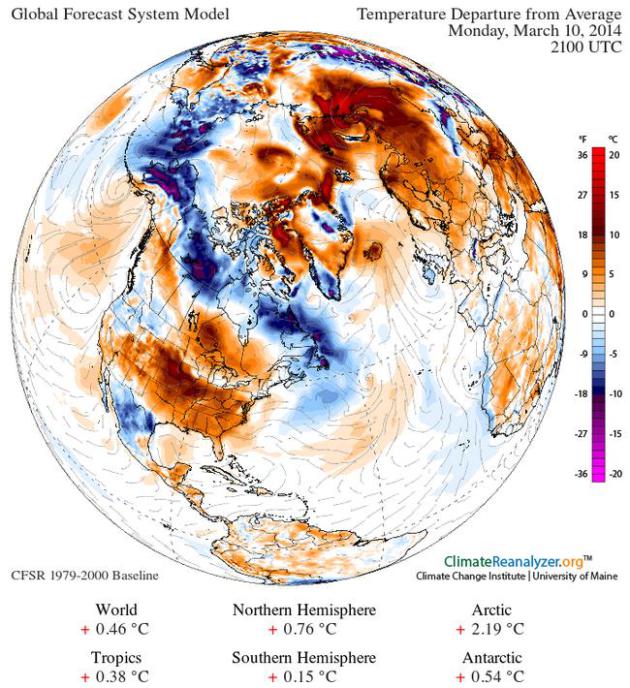





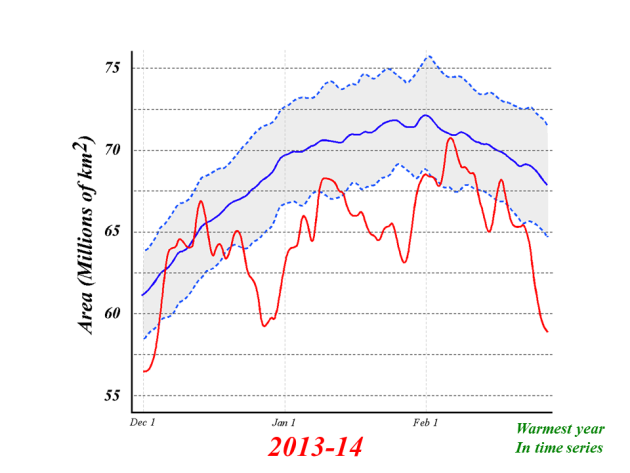

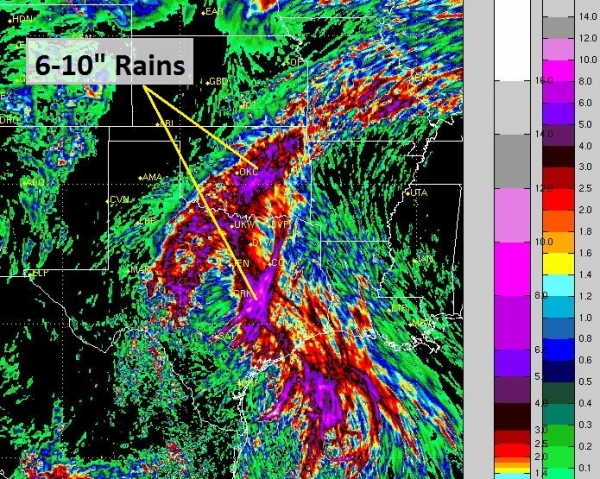





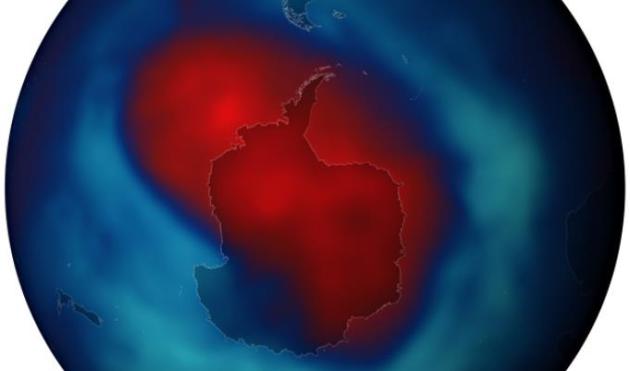
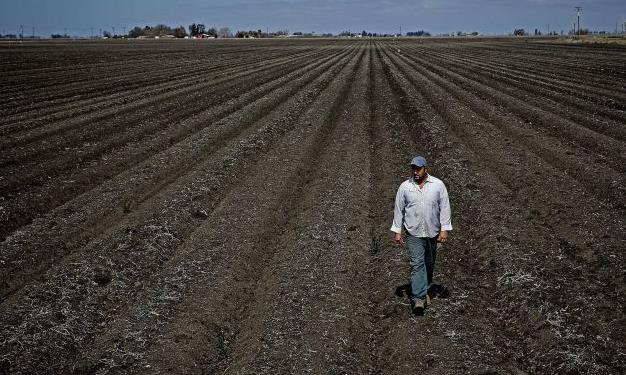





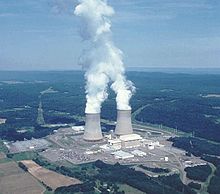

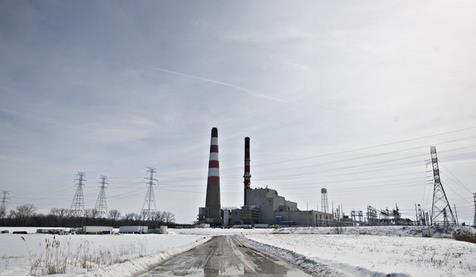
Thank you for sharing valuable information. Nice post. I enjoyed reading this post. The whole blog is very nice found some good stuff and good information here Thanks..Also visit my page auto dealer licensing DLC Network offer all kind of dealer and brokers licensing solutions including auction license.
ReplyDelete